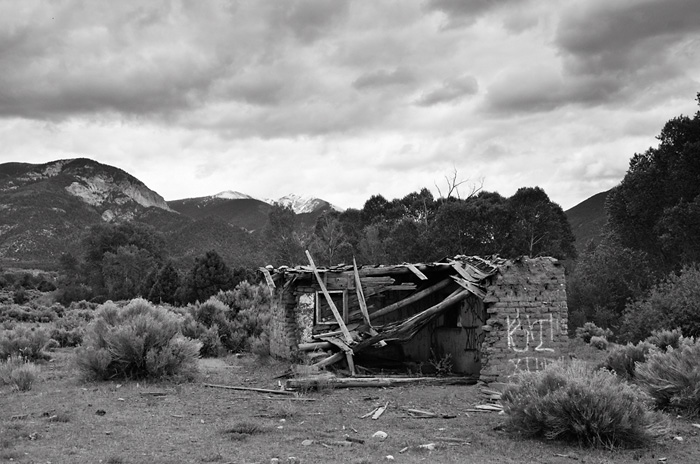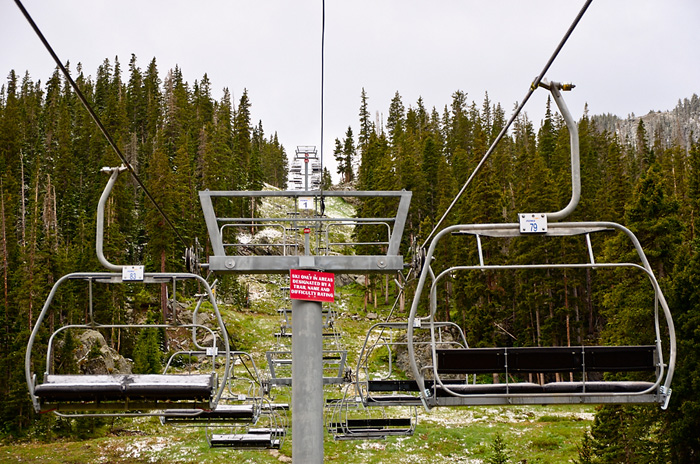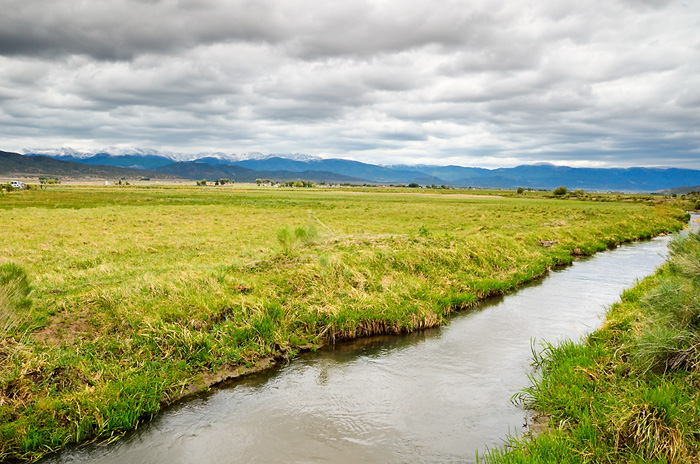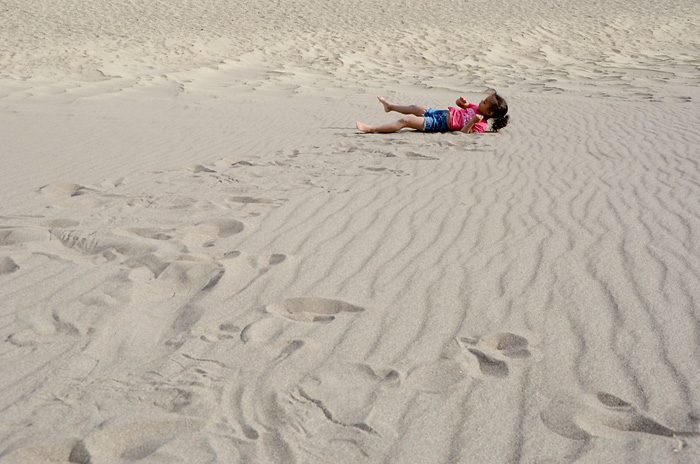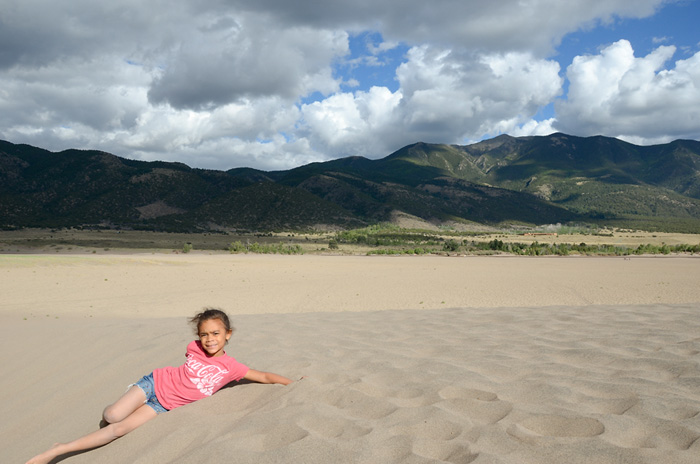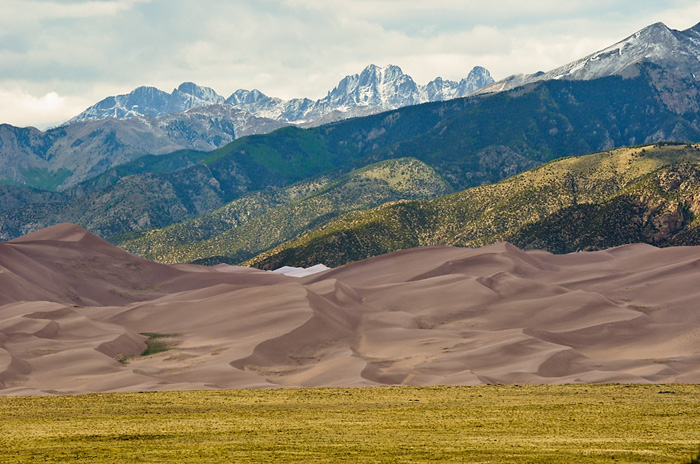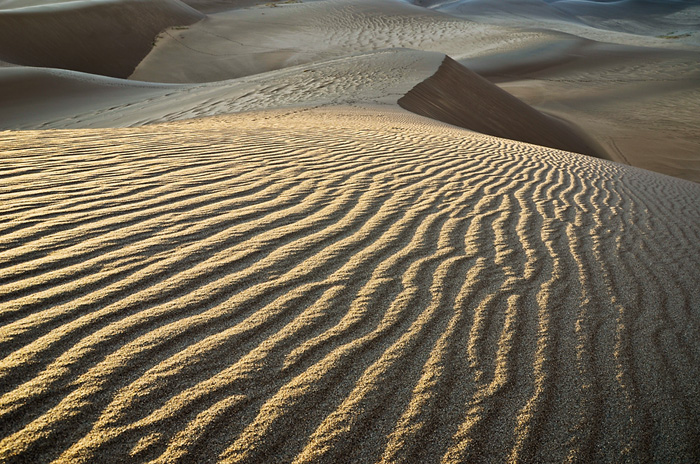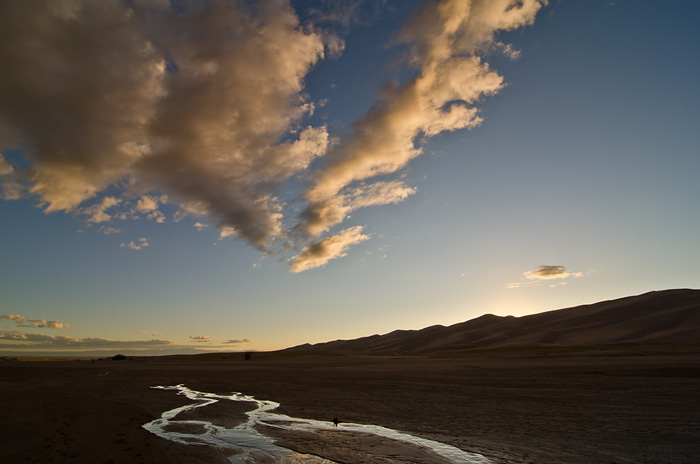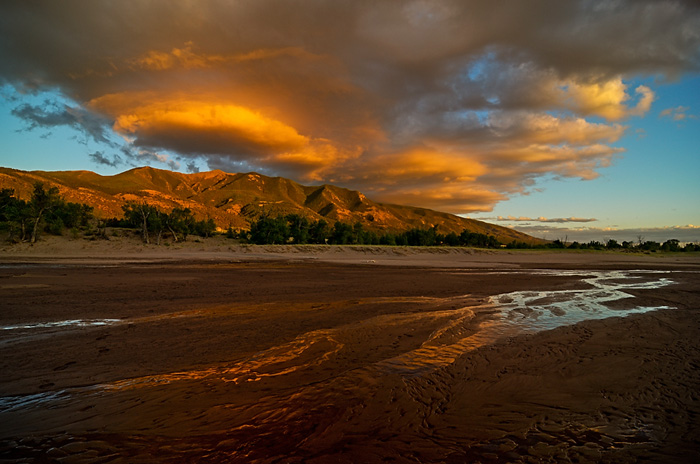When we got up on our third day in Taos, we could see new snow on the mountain tops and decided to go back up to Taos Ski Village to check it out.
After an hour in the ski village, admiring the various view of snow capped mounatins, we took off for Colorado.
On the outskirts of San Luis, Colo., we stopped at a historical marker to take in the view of the fresh snow on the Culebra Range of the Sangre de Cristo Mountains. The marker said the irrigation ditch in the foreground is the San Luis People’s Ditch, dug in the 1850’s by the community and the oldest operating irrigation apparatus in the state. After San Luis we stopped off in Fort Garland to eat some of the worst road food I’ve ever had at the Cowboy Cafe. Then we visited the town’s grocery store, inside of which it remains 1975. Pretty charming actually.
Our next stop was Great Sand Dunes National Park where we had reservations at the Great Sand Dunes Lodge. Gina and I visited the sand dunes back in 1998, but only stayed there for an hour or so and barely made it past the parking lot. I’ve always wanted to go back and hike out into the dunes. We trudged about a quarter of a mile across a sandy flat to reach the first dune. When we got there Abby threw herself on the ground and started rolling in the sand.
At one point we lost her as she went rolling down the side of a dune. The wind was gusty and strong at times. The strong gusts lifted a layer of sand about a foot thick up off the ground. I guess the sand was too heavy to go any higher, need a stronger wind for that. Abby, in an amazed voice, said, “Look at the sand! It’s glowing!” The sun was shining down through the layer of blown sand and from a low angle it did indeed look like the sand surface was glowing.
The sand dunes are major geological wonder. Erosion carries sand out of the mountains and onto the vast Rio Grande Valley. The southerly winds pick that sand back up and carry it toward the Sangre de Cristos. But wind blowing downslope out of the mountains stops the southerlies and the sand drops out. Over the eons a huge dune field has formed. And although the dune field is huge, it doesn’t extend all along the mountains. Conditions are only right in one area of the valley for dune formation.
Here’s a shot of some people for perspective. Some of the individual dunes are immense. The tallest dune is 750 feet.
The lodge is situated just outside the park. Each room has a back patio with this view. I think that tallest mountain is the 14,294 foot Crestone Peak.
I took Abby and Gina to the lodge and went back out on the dunes to shoot some photos in the magic hour light.
The wind became constant and stronger as the afternoon wore on. That foot-thick layer of airborne sand was everywhere. The ground in most of my photos looks a little blurry because of the blowing sand. I liked this one because my shadow was extended beyond the rim of this dune because it was falling on the sand being blown past the edge. At one point I laid my tripod down and the wind created a tripod shaped sand drift. Also, sand stuck to every slightly lubricated part of the tripod. It’s still gritty.
Medano Creek runs along the edge of the dunes and is a big draw for dune tourists. The creek normally runs well into June, but this year the mountains had a smaller than usual snowpack and the creek was going dry by mid-June. You can actually go to the place where the creek ends and watch it soak into the sand.
While I was messing around shooting the end of the creek I turned around and saw this awesome sunset spectacle over Blanca Peak, the tallest mountain in the Sangre de Cristos at 14,345 feet.
